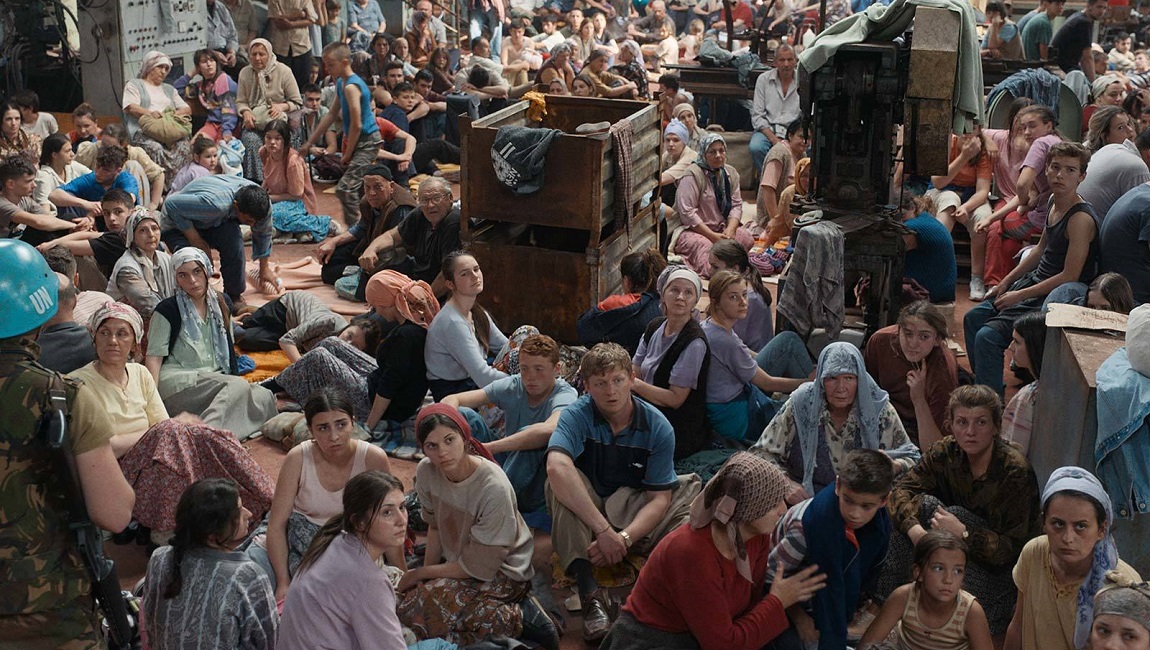It goes without saying that Japanese anime is a permanent part of the international cinephilic sphere. There are many reasons why the appeal and success of this animated medium passed beyond its homeland’s borders to attract a zealous worldwide audience, but one undeniably primary cause for it is that anime (and manga) — regardless of auteurs, animators or studios — has formed a distinctive aesthetic and vision. Bearing this in mind, it’s notable that Yutaro Kubo and Satomi Maiya’s debut animated feature, The Girl from the Other Side — adapted from the eponymous, best-selling Monthly Comic Garden’s manga series written and illustrated by Nagabe — immediately presents as anything but a familiar anime. The film tells the story of a curious and adorable little girl named Shiva, a fairy-like, doll-sized child with silver hair and pale skin. Abandoned in a forest, Shiva soon makes the company of a bizarre, horned creature with dark fur known as an “outsider” who, unlike his ominous, devilish appearance, is revealed to be a well-mannered, wise, and kind-hearted character who carries himself like a sharp-dressed, fanciful gentleman. Kubo and Maiya shape their film around this stark contrast between the two characters, centering this uniquely improbable friendship as its focal point, a cutie and the beast fable reminiscent of something like Hayao Miyazaki’s My Neighbor Totoro, but filtered through a spookier and more melancholic atmosphere.
To take a deeper read to this charming relationship between the innocent Shiva and her anonymous, demon-looking guardian — who has forgotten his name and is referred to by the angelic little girl as “teacher” — it’s not hard to consider their light-and-dark dichotomy as a sort of yin-and-yang relationship which consistently completes itself and shapes an equilibrium between the two throughout their mutual journey of self-realization. Half post-apocalyptic tale and half medieval gothicism, The Girl from the Other Side is set against a pastoral background of dark woods, green meadows, and abandoned villages, occupying a realm where the world of the humans and cursed malevolent creatures are divided into “Inside” and “Outside.” Indeed, the narrative is indebted to a classically fabulist design, and it’s a sensibility that extends to the film’s visual character: in being truthful to the original manga source, the directorial duo construct their classically hand-drawn and tenderly vibrant animation in the fashion of antique illustrated children’s books, sometimes even recalling old Eastern European cartoons. Beautifully simple and yet full of colorful details, The Girl from the Other Side’s execution gives the aesthetic impression of a sketchbook, utilizing its frames more as pages, and lending the overall design a peculiar and particular vintage quality.
It’s through this unique style — the animation’s distinctive visual texture (replete with artificial light effects), the narrative’s slow-paced rhythm, and an ambient neoclassical score (composed by club jazz trio Schroeder-Headz) — that The Girl from the Other Side effortlessly lulls its viewers into a world that is simultaneously arcane and serene, allegorical and lyrical, macabre and affectionate. It slides easily between delightfully sinister and affectingly sincere, while keeping itself deliberately open to lots of mystical ruminations and philosophical interpretations — it may not be accidental that the film speaks to our post-pandemic age, depicting an imaginary world and era in which a strange curse spreads and threatens human life. In fairness, for all those implications, the film’s primary story and world-building are still considerably thin and could benefit from richer development, which would, in turn, help its tendency toward repetitiveness, but the sumptuous moodiness and fanciful flourishes that Kubo and Maiya bring to the proceedings — which is also echoed in the voice work here from Rie Takahashi (adorably teensy-weensy as Shiva) and Jun Fukuyama (commanding and calm as the Teacher) — provide more than enough pleasures to keep viewers invested until the film’s chaotic but poetic climax. In the end, The Girl from the Other Side can best be understood as a bewitching and at times bizarre bedtime story, one, through its strength of form and invention, fully capable of and committed to throwing viewers into (and suspending them within) otherworldly realms of trippy imagination and whimsical fantasy.
Published as part of Fantasia Fest 2022 — Dispatch 4.







